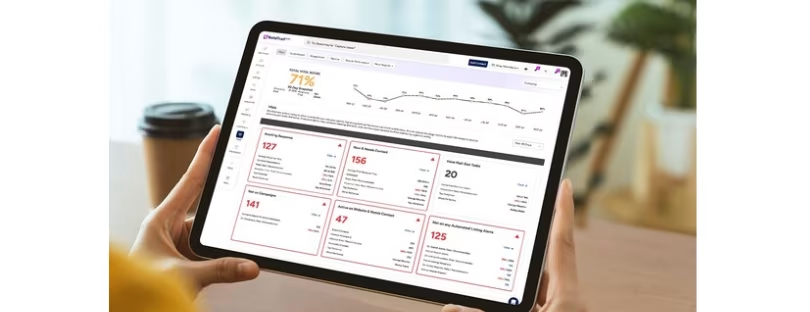
Warehouse Digitalization: A Brief Guide For Technopreneurs
With the advent of eCommerce, the demand for faster and streamlined operations as well as the need to manage a growing number of goods with fewer errors must be met. Warehouses need to upgrade and meet the standards of intelligent, automated, and digitized operations. Warehouse Digitalization
This article discusses how warehouse digitalization is impacting the eCommerce supply chain and the emerging technologies transforming warehouses today.
Understanding Warehouse Digitalization And Its Benefits
Warehouse digitalization refers to utilizing modern technology to automate and optimize warehouse workflows and processes. Digital warehousing provides solutions to persistent issues and challenges faced by the logistics industry, helping businesses overcome the roadblocks hindering their competition and attain ongoing success.
In general, digital warehousing means outsourcing logistics to a modern, tech-enabled warehouse for more scalability and flexibility.
Benefits Of Digital Warehousing
-
Improves Efficiency
Warehouse digitalization eliminates mundane tasks by automating them, saving thousands of hours in manual work. In addition, technology can also improve warehouse design and setup, optimizing storage and streamlining order fulfillment and processes by tracking how inventory is performing at each warehouse location.
-
Increase Visibility
With digital warehousing solutions, businesses can gain visibility on their goods, tracking stock and viewing order status with ease. The increased visibility allows businesses to step away from the daily operations and still be able to track their products in the supply chain and make well-informed business decisions.
-
Eliminating Siloed Systems
As your online business grows, so does your supply chain. And with several moving parts in your supply chain, it can become quite complicated to manage.
By implementing technology like WMS, you can streamline your logistics tech stack and allow for accurate and real-time data. This ensures the accuracy of information and data throughout the distribution network.
Technologies In A Digital Warehouse
-
Warehouse Management System (WMS)
A WMS is the most important part of any digital warehouse. A dependable WMS allows you to control and monitor your daily logistics operation in one or multiple warehouses and track all inventory that’s being stored, received, packed, and shipped in the most efficient way possible.
If you’re looking for a reliable solution, integrating Softeon WMS into your warehouse inventory system is recommended to streamline your logistics tech stack and provide you with real-time accurate data and information throughout your distribution network.
-
Increased Interconnectivity And Real-Time Data Gathering
Current warehouse and supply chain systems are now becoming more interconnected and exchanging real-time data. Blockchain has played a pivotal role in achieving transparency, allowing the fast and secure distribution of information and making real-time data exchange for multiple warehouses transparent and efficient.
Another technology, the Internet of Things (IoT) has increased interconnectivity in warehouses. Using IoT to power your warehouse allows you to collect and transmit data in real-time via an ecosystem of sensory devices that are interconnected across various digital networks.
Together, both technologies can bring seamless collaboration and real-time visibility among chain partners and processes, leading to efficient and highly evolved operating models.
-
Autonomous Guided Vehicles
Autonomous Guided Vehicles (AGVs) aren’t widely adopted yet. However, it’s a significant substitute for the forklift, revolutionizing the way cargo is transported in and out of your warehouse.
According to reports, the global AGV market was already worth USD$2.41 billion in 2020 and is expected to reach USD$14.18 billion in 4 years.
AGVs can also move goods in the warehouse, speeding the picking process and contributing to a streamlined inventory management operation.

In addition, drones are also set to enter the warehousing industry. Equipped with cameras, sensors, RFID technology, or barcode scanners, a drone can reach even the innermost, hidden spaces within a warehouse.
Thus, they’re economical and safe in terms of locating cargo, cycle counting, conducting inventory, and stock-taking operations. This technology can help manage inventory and complete checks in less than a third of the time needed to manually do it.
-
Wearable Technology
Businesses that wish to digitize their warehouse operations and improve employee productivity will benefit if they adopt wearable technology. Although more popular in the health and fitness industry, wearable technology is now being implemented across warehouses for more interactive processes and workflow.
The likes of activity-tracking bracelets, smart glasses, handheld scanners, and mobile printers allow warehouse workers to gain access to information on the go. These wearables are fully equipped with smart sensors and sync seamlessly with WMS to speed up warehouse processes.
Takeaway
The future of warehouse digitalization is already here. It has paved the way for automation and technology by transforming traditional warehouses with forklifts and employees manually stocking racks to digitized, smart warehouses with less human intervention and processing goods with fewer errors.








